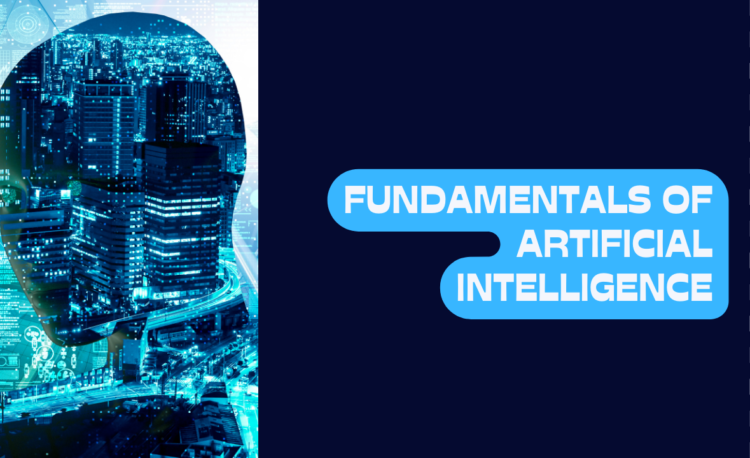Artificial Intelligence (AI) is no longer just a concept from science fiction; it’s a powerful technology that is transforming industries and daily life. From virtual assistants like Siri and Alexa to complex algorithms powering financial systems and healthcare diagnostics, AI is all around us. This article delves into the fundamentals of AI, comparing it to human intelligence, and exploring the ethical considerations surrounding its development and use.
What is Artificial Intelligence?
Artificial Intelligence (AI) refers to the simulation of human intelligence in machines programmed to think and act like humans. AI encompasses a broad range of technologies and applications, from basic algorithms to advanced machine learning and deep learning models. The primary goal of AI is to create systems capable of performing tasks that typically require human intelligence, such as understanding natural language, recognizing patterns, and making decisions.
Types of AI
There are two main types of AI: Narrow AI and General AI.
- Narrow AI (Weak AI): Narrow AI is designed to perform a specific task or a set of tasks. Examples include virtual assistants, facial recognition systems, and recommendation algorithms. Narrow AI operates under a limited set of parameters and does not possess general intelligence.
- General AI (Strong AI): General AI aims to achieve human-like intelligence, with the ability to understand, learn, and apply knowledge across a wide range of tasks. While we have not yet achieved General AI, it remains a significant goal in AI research.
Key Components of AI
Understanding AI requires familiarity with its key components:
- Machine Learning (ML): ML involves training algorithms to learn from data and improve over time. This can be supervised, unsupervised, or reinforcement learning.
- Supervised Learning: The model is trained on labeled data, learning to map inputs to outputs.
- Unsupervised Learning: The model identifies patterns and relationships in unlabeled data.
- Reinforcement Learning: The model learns through trial and error, receiving rewards or penalties for actions taken.
- Deep Learning (DL): A subset of ML, deep learning uses neural networks with multiple layers to process data and recognize patterns. Deep learning is responsible for significant advancements in image and speech recognition.
- Natural Language Processing (NLP): NLP enables machines to understand, interpret, and respond to human language. Applications include chatbots, language translation, and sentiment analysis.
- Computer Vision: Computer vision allows machines to interpret and make decisions based on visual data. It is used in applications like facial recognition, medical imaging, and autonomous vehicles.
AI Applications in Everyday Life
AI is already embedded in many aspects of our daily lives:
- Smartphones: Virtual assistants, camera enhancements, and predictive text rely on AI to improve user experience.
- Social Media: AI curates content, recommends friends, and filters harmful content on platforms like Facebook and Instagram.
- E-commerce: AI personalizes shopping experiences through product recommendations and targeted marketing.
- Home Automation: Smart home devices use AI to learn user preferences and optimize settings for convenience and efficiency.
AI vs. Human Intelligence
While AI has made impressive strides, it still differs significantly from human intelligence in several key areas:
- Learning and Adaptation:
- AI: Learns from vast amounts of data, improving over time through pattern recognition.
- Human Intelligence: Learns from experiences, adapts to new situations, and applies knowledge creatively.
- Creativity and Innovation:
- AI: Can generate content based on existing data but lacks true creativity and the ability to innovate beyond programmed knowledge.
- Human Intelligence: Driven by emotions, experiences, and imagination, humans can think outside the box and create novel solutions.
- Emotional Intelligence:
- AI: Can recognize emotions to some extent but does not experience or understand them.
- Human Intelligence: Capable of empathy, building relationships, and navigating complex social interactions.
- Problem-Solving and Decision-Making:
- AI: Excels at analyzing data and finding patterns but struggles with ambiguity and requires clear parameters.
- Human Intelligence: Uses intuition, logic, and ethical considerations to solve complex, ambiguous problems.
Ethical Considerations in AI
As AI technology advances, it is crucial to address the ethical implications to ensure it benefits society responsibly.
- Bias and Fairness:
- Challenge: AI systems can inherit biases from the data they are trained on, leading to unfair outcomes.
- Solution: Use diverse datasets and continuously monitor AI systems to detect and mitigate bias.
- Privacy and Surveillance:
- Challenge: AI technologies like facial recognition and data mining raise concerns about privacy and surveillance.
- Solution: Implement strong data protection laws and transparent data collection practices to safeguard privacy rights.
- Accountability and Transparency:
- Challenge: AI systems can make significant decisions affecting people’s lives, raising questions about accountability and transparency.
- Solution: Develop explainable AI techniques and establish clear guidelines and regulations for AI development and deployment.
- Job Displacement and Economic Impact:
- Challenge: AI automation can lead to job displacement and economic disruption.
- Solution: Invest in education and reskilling programs to help workers transition to new roles and ensure a smooth economic transition.
- Ethical AI Development:
- Principles: Developers and organizations must prioritize ethical principles like beneficence, non-maleficence, autonomy, and justice.
- Frameworks: Adopt guidelines such as the Asilomar AI Principles, IEEE’s Ethically Aligned Design, and the European Commission’s AI Ethics Guidelines.
Conclusion
Artificial Intelligence holds immense potential to transform our world for the better. By understanding its fundamentals, comparing it with human intelligence, and addressing ethical considerations, we can harness AI’s power responsibly. Ensuring fairness, transparency, and accountability in AI development is crucial for building a future where AI benefits everyone.
Thank you for reading this in-depth exploration of AI. If you found this article informative, please share it with others interested in the fascinating world of AI. Stay tuned for more insights into AI and other emerging technologies!

